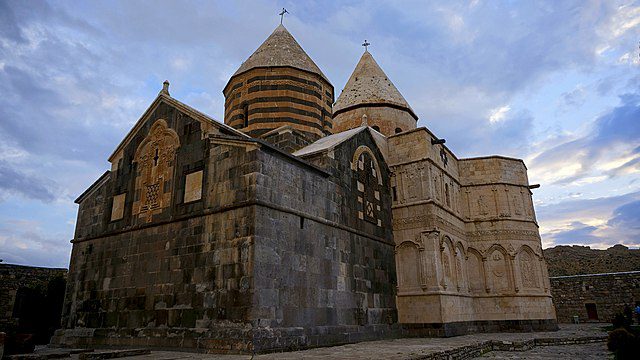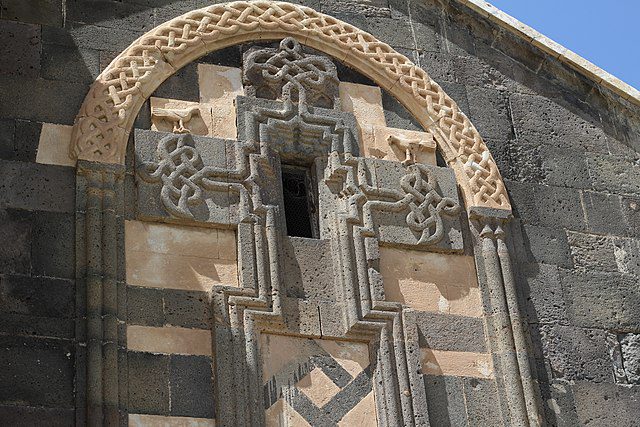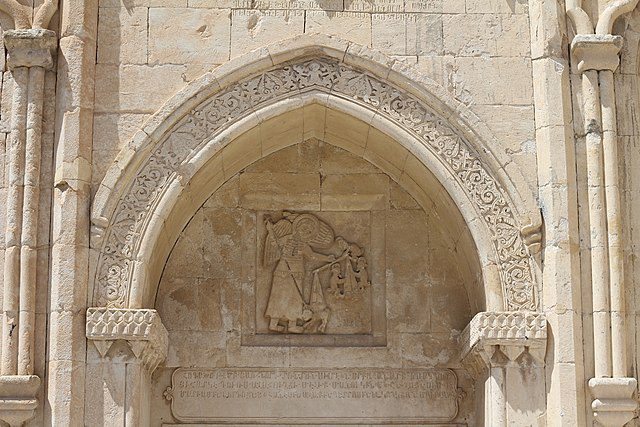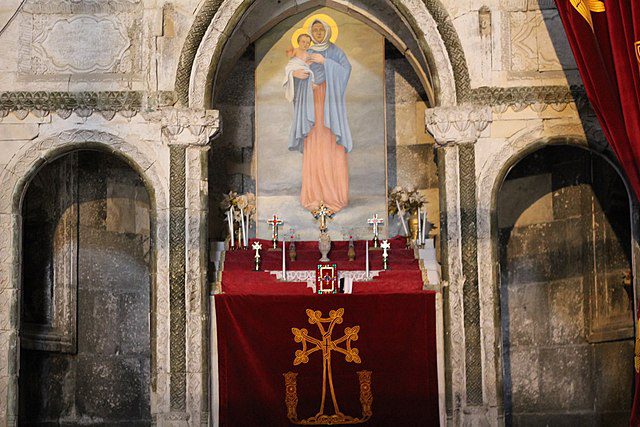Table of Contents
St Thaddeus, a loyal follower of Jesus among the twelve disciples, embarked on a mission driven by divine inspiration after Jesus’ passing. He journeyed through Syria, Iraq, and Armenia, spreading the teachings and resurrection of Jesus Christ. Also known as St. Jude, he shared a familial connection with Our Savior, Jesus Christ, and stood as one of the revered Apostles.
In the world of religious imagery, St. Thaddeus is depicted with symbols that speak volumes about his spiritual journey. He is often shown with a club, symbolizing his steadfast faith and bravery in spreading the message of truth. The flame surrounding his head signifies his acceptance of the Holy Spirit during Pentecost, a moment of divine communion with the apostles.
Holding the Image of Edessa, he showcases his unwavering devotion to Christ. Whether seen with a carpenter’s ruler or clutching the Epistle of Jude, his image radiates timeless wisdom and invites believers to explore his enduring legacy.
The Armenians in Iran
Traveling beyond Armenia’s borders unveils a treasure trove of old churches in Iran, each with rich history and spiritual significance. These sacred places offer a peek into Armenia’s past, showcasing stories of faith and profound experiences.
One story tells of Thaddeus and King Abgar’s meeting, which kickstarted Christianity in Armenia. The spear that pierced Christ’s side, now kept in Geghard Monastery, symbolizes spiritual renewal in Armenian rituals.
Armenia’s journey to Christianity was tough, marked by persecution and martyrdom. Figures like Sandoukht, who stayed true to her beliefs even in the face of death, embody the enduring spirit of Armenian Christianity. The martyrdom of Thaddeus, honored at St. Thaddeus Monastery, reminds us of the sacrifices made for faith. As we explore these ancient churches, we’re not just learning history; we’re experiencing a journey of faith and resilience passed down through generations.
Saint Thaddeus Monastery
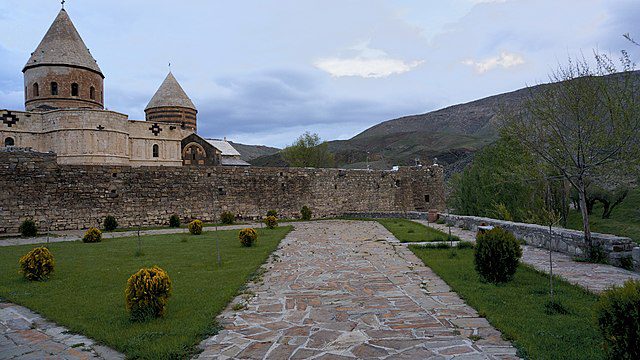
In Iran’s northwest, there’s a special place called Saint Thaddeus Monastery, also known as Kara Kilise or Qara Kelisa. It’s a really old Armenian church with a big story behind it. People believe it’s where one of Jesus Christ’s twelve apostles, Saint Thaddeus, was buried. Nobody knows exactly when it was built, but some say it goes all the way back to AD 239, while others think it was in AD 66.
Legend has it that Thaddeus himself built the monastery for his followers and later was buried there. The monastery’s walls are made of stone and are covered in fancy carvings and holy stuff. People come from all over to visit because it’s a special place for believers and history buffs alike. The monastery is tucked away in a quiet spot, giving it a peaceful and spiritual vibe that makes you feel like you’re stepping back in time.
Explore the ancient Saint Thaddeus Monastery and step into a world where history meets spirituality. Wander through its old halls and admire the carved walls that tell stories from long ago. Each detail holds a piece of the past, showing the dedication of those who came before us. In this serene place, time seems to stand still, connecting the present with ancient traditions. Inside, you’ll find relics and treasures that speak of pilgrimage and devotion. Amidst the quiet whispers of visitors, the monastery offers a place of peace and reflection.
St Thaddeus: Oldest Monastery in the World
Located in the rugged hills of West Azerbaijan Province, Iran, lies the ancient Monastery of Saint Thaddeus, a living testament to history and devotion. This old Armenian monastery is said to be one of the oldest church buildings globally, standing strong despite the passing centuries. Surrounded by towering mountains, St. Thaddeus is a symbol of enduring spirituality, drawing pilgrims and explorers to its doors to uncover its secrets and stories.
Stepping into the sacred grounds of St. Thaddeus, visitors are greeted with a sense of wonder. Each stone, carefully placed long ago, tells a tale of dedication and reverence. The monastery’s remarkable architecture, adorned with detailed carvings, reflects the skilled hands of those who built it centuries ago. Amidst the echoes of ancient prayers and the footsteps of generations past, time seems to pause within St. Thaddeus, inviting all who come to experience its timeless beauty and profound spiritual presence. This ageless sanctuary continues to captivate hearts, offering solace and enlightenment to all who seek it.
Saint Thaddeus Monastery Architecture
Set amidst the rugged terrain of Iran, the Saint Thaddeus Monastery boasts a grand Basilica style, known for its spaciousness and majestic proportions. Throughout its history, this sacred site has undergone several renovations. During the Abbas Mirza Period, craftsmen adorned it with limestone, adding elegance to its exterior. Interestingly, traces of ancient Mithraism, including Swastika motifs, hint at its diverse cultural influences.
Despite enduring attacks and earthquakes, Saint Thaddeus Monastery remains resilient, marked by visible bullet scars on its walls. Thanks to figures like Zakaria, Nasir al-Din al-Tusi, and Shah Abbas the Great, the monastery has been restored multiple times. Its cultural significance was recognized in 2008 when it was added to Iran’s UNESCO World Heritage List. Today, pilgrims flock to Qara Kelisa, particularly in early July, to honor the martyrdom of Thaddeus, Bartholomeus, and other early Christians, forging a timeless connection between past and present.
Saint Thaddeus Monastery Building
Saint Thaddeus Monastery stands tall, its impressive size stretching 200 meters high and 150 meters wide. Divided into old and new sections, this grand building welcomes visitors with a striking entrance featuring two pointed domes adorned with detailed grooves. Five watchtowers and a prominent bell tower add to its commanding presence.
Inside, the monastery reveals its secrets—a maze of 47 rooms, a well-stocked library, and a storeroom filled with essentials. Below ground, a mysterious basement beckons exploration. The monastery’s courtyards offer peaceful retreats, while its central church dome, crafted from black and white stones, boasts intricate reliefs depicting religious figures, flowers, and animals.
Saint Thaddeus Monastery’s architecture tells stories of faith and craftsmanship, inviting all who visit to marvel at its beauty and history.
Christian Ritual in Iran
As shortly mentioned above, every year, Christians from Iran and all over the world come together in the first week of Mordad, which is in early July, to remember Thaddeus, Bartholomeus, and other early Christians who gave their lives for their faith. This pilgrimage isn’t just a tradition—it’s a way for people to show how much they appreciate and respect these martyrs.
Qara Kelisa, set in the peaceful countryside of Iran, is where this special journey takes place. As people gather here, they bring not only their prayers but also a strong feeling of togetherness and belonging. The rituals they perform are a reminder of the enduring faith that has kept believers strong through tough times. This pilgrimage isn’t just about looking back—it’s about feeling connected to the past and finding strength in our shared beliefs.
FAQs about St Thaddeus
Q1: What is St Thaddeus known for?
A1: Saint Jude, also called Saint Jude Thaddeus, is famous worldwide as the Patron Saint of Hopeless Causes. He was one of Jesus Christ’s twelve Apostles and his cousin. He bravely spread the Gospel, even in tough situations.
Q2: What is the pilgrimage of St. Thaddeus?
A2: Every July, people make a three-day pilgrimage to the St. Thaddeus Apostle Monastery in northwestern Iran. This pilgrimage honors two important saints: St. Thaddeus, who was among the earliest apostles spreading Christianity.
Q3: Why is Judas called Thaddeus?
A3: The apostle Thaddeus, mentioned in the Gospels of Matthew (10:3) and Mark (3:18), is believed to be the same person as the first Judas mentioned in Luke (6:16). It’s probable that this apostle had another name, which was frequently used to prevent confusion with Judas Iscariot.
Q4: What happened to Thaddeus the disciple?
A4: According to a tradition, Thaddeus, also known as Judas, established a church in Edessa (now Şanlıurfa, in present-day Turkey) and died as a martyr. Depending on which tradition you follow, his remains were either taken to Rome and laid to rest in St. Peter’s Basilica, or they were transported to an Armenian monastery.
Q5: How was Thaddeus martyred?
A5: According to tradition, Thaddeus died in Beirut, Lebanon in 65 CE along with Simon the Zealot, who is often believed to be his preaching companion. In Christian artwork, Thaddeus is often depicted holding an axe, symbolizing his decapitation.
Last Words: Explore St Thaddeus Monastery in Iran with a Customized Tour
St. Thaddeus was a follower of Jesus. After Jesus passed away, Thaddeus felt a calling from God to go on a special journey. He went to northwest Iran and helped build a church called Saint Thaddeus Monastery, also known as Kara Kilise or Qara Kelisa. This old Armenian church has a big story behind it.
Exploring St. Thaddeus Monastery in Iran can be a truly special journey. But to make the most of it, it’s wise to go for tours that are customized just for you. That’s where To Iran Tour comes in. At To Iran Tour, your satisfaction is our top priority. We want to make sure you have the best possible experience in Iran, so we’ll take care of all the details for you.
Let us help you discover the magic of Iran’s cultural heritage, and create memories that will last a lifetime.

